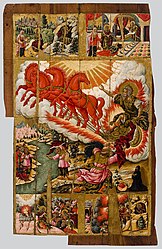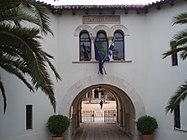Archivo:Poulakis Theodoros-The ascension of prophen Elijah and scenes from his life (borders).jpg
Apariencia

Tamaño de esta previsualización: 390 × 600 píxeles. Otras resoluciones: 156 × 240 píxeles · 312 × 480 píxeles · 499 × 768 píxeles · 1080 × 1661 píxeles.
Ver la imagen en su resolución original (1080 × 1661 píxeles; tamaño de archivo: 480 kB; tipo MIME: image/jpeg)
Historial del archivo
Haz clic sobre una fecha y hora para ver el archivo tal como apareció en ese momento.
| Fecha y hora | Miniatura | Dimensiones | Usuario | Comentario | |
|---|---|---|---|---|---|
| actual | 10:53 12 feb 2017 |  | 1080 × 1661 (480 kB) | Shakko | =={{int:filedesc}}== {{Information |description={{en|1=The Ascension of the Prophet Elijah and scenes from his life}} The icon is divided into three bands. The central one depicts the Ascension of the Prophet Elijah to heaven on a golden chariot of fi... |
Usos del archivo
La siguiente página usa este archivo:
Uso global del archivo
Las wikis siguientes utilizan este archivo:
- Uso en en.wikipedia.org
- Uso en fr.wikipedia.org
- Uso en www.wikidata.org



